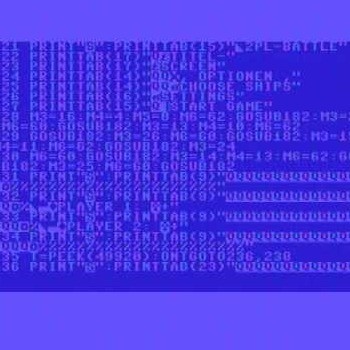The Bit Rate Reduction sound encoding scheme, as interpreted by Butcha
INTRODUCTION
Due to the requests of several people, the lack of documentation in this area, and a hope to spring the SNES emulation "scene" forward, I am going to try to describe the BRR encoding scheme in this doc. Everything here, I either read in publicly available documentation, or discovered myself through trial and error. I cannot guarantee the accuracy of this doc, and I will not be responsible for errors, either typographical or otherwise. However, if you are satisfied with the output of SNESSOR, the SNES SOund Ripper, then this doc should work for you.
BRR
BRR, or Bit Rate Reduction, is the sound encoding scheme used by the SPC700, the sound chip in the SNES. It has a compression ratio of 32:9, meaning that for every 32 bytes of 16-bit PCM there are 9 bytes of BRR. These 9 bytes consist of 1 header byte, and 16 nybbles of data, as follows:
_______
| | byte
|Header | 1
| |
|-------|
|data 1 | byte
| - - - | 2
|data 2 |
|-------|
|data 3 | byte
| - - - | 3
|data 4 |
|-------|
/ /
/ /
|-------|
|data 15| byte
| - - - | 9
|data 16|
|_______|
The header byte is decoded as follows:
xxxxxxxx
||||||||____END bit - determines the end of a sample
|||||||_____LOOP bit - determines whether a sample will loop
||||||______
|||||_______>FILTER bits - determines which filter to apply (described later)
||||________
|||_________\
||__________ >RANGE bits - see below
|___________/
The END bit is clear for every 9-byte block until the last block of a sample. When you encounter this bit, you should finish reading the following 8 bytes, then stop.
The LOOP bit is set in every single 9-byte block of a sample that loops, and is clear in every single block of a sample that doesn't. Proper use of this bit requires a loop point, however there is no standard way to store this outside of the SPC itself. For more info concerning loop points, consult an SPC hardware doc.
The FILTER bits are described below.
The RANGE bits tell how to read each nybble of data. Basically, you take the nybble, and you shift it left RANGE times. The nybble is signed, and this must be taken into account. Note that a RANGE greater than 12 would shift the nybble past a 16-bit value, so RANGE values from 12 to 15 are invalid, and it is on this that the SNESSOR sample search is based, among other things.
If that wasn't especially clear, I'm sorry. Let's try some example code to help:
int range, end=0, loop, filter, counter, temp; // Size of these doesn't matter
short input, output[MAXSAMPLEN]; // These must be 16-bit
int now=0; // Pointer to where we are in output[];
while(end==0)
{
range=GetNextByte(); // Let's just put the header here for now
end=range&1; // END bit is bit 0
loop=range&2; // LOOP bit is bit 1
filter=(range>>2)&3; // FILTER is bits 2 and 3
range>>=4; // RANGE is the upper 4 bits
for(counter=0;counter<8;counter++) // Get the next 8 bytes
{
temp=GetNextByte(); // Wherever you want to get this from
input=temp>>4; // Get the first nybble of the byte
input&=0xF;
if(input>8) // The nybble is negative, so make the
input|=0xFFF0; // 16-bit value negative
output[now]=input<<range; // Apply the RANGE value
// Filter processing goes here (explained later)
now++; // Advance our output pointer
// Now do the same thing for the other nybble
input=temp&0xF; // Get the second nybble of the byte
if(input>8) // The nybble is negative, so make the
input|=0xFFF0; // 16-bit value negative
output[now]=input<<range; // Apply the RANGE value
// Filter processing goes here (explained later)
now++; // Advance our output pointer
}
// We're done with all 8 bytes, and if the END bit was present, we're
// done with the whole sample.
}
Note that this does NOT deal with the filter bits, so lets discuss that now:
FILTERS
There are 3 BRR filters. A filter value of zero means apply no filter.
Filter 1: This filter is relatively simple. All you have to do, is take the 16-bit sample that was last output, multiply it by the fraction 15/16, and add the value you got by decoding the nybble as usual. In all 3 filters, this decoded value will serve as an "error" between the calculated value and the actual one.
Filter 2: This filter and the next are a little more complicated. To calculate the value, multiply the last sample output by the fraction 61/32. Then, subtract from it the value when the sample before that is multiplied by the fraction 15/16. Then, add the value decoded from the nybble as always. Filter 3: This filter is identical to the last one, except the fractions are different. The fraction for the previous sample is 115/64, and for the sample before that, 13/16.
Now, I KNOW that explanation is going to need some example code. Assuming that output[now] already contains the value decoded by shifting the nybble by the range(see example code above), processing the filters is as follows:
if(filter==1)
output[now]+=(short)((double)output[now-1]*15/16);
else if(filter==2)
output[now]+=(short)(((double)output[now-1]*61/32)-((double)output[now-2]*15/16));
else if(filter==3)
output[now]+=(short)(((double)output[now-1]*115/64)-((double)output[now-2]*13/16));
CLOSING
I think that should about do it... If you didn't catch all that, I'm sorry, this is my first doc. If someone thinks they can describe it better, please do.
Thanks to: Everyone that ever wrote an SPC doc, especially:
Gau of the Veldt for his SPC doc,
Ledi for his APU manual (TODO.TXT),
Uxorious, who didn't write a doc that I know of, but did write the
Cool 95 plugin that can read BRR, from which I learned how to
do the filters, and who I still wonder how he learned them,
_Demo_ of ZSNES for helping to make a great emulator, and for his
support.
and anyone else that feels they should be thanked!




















